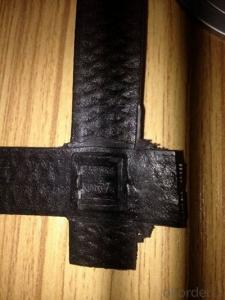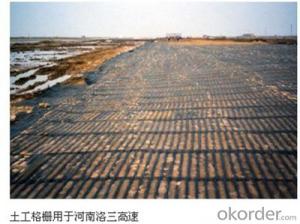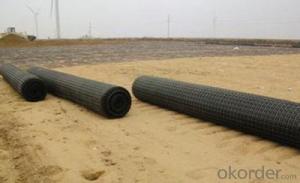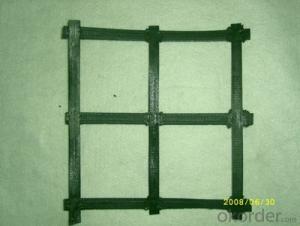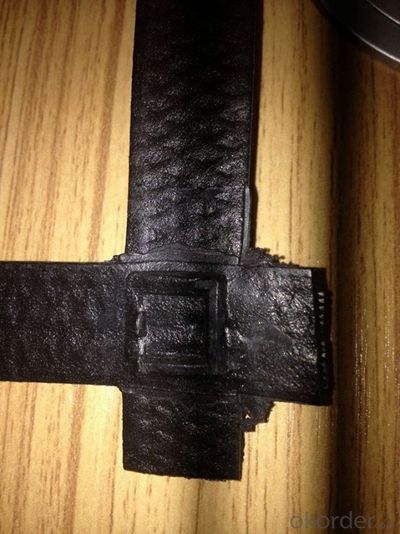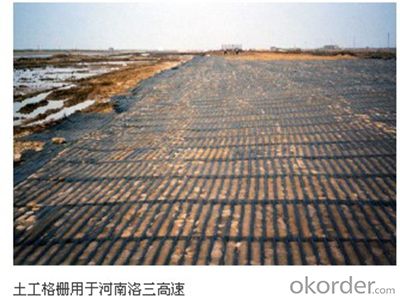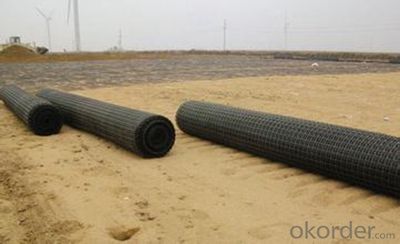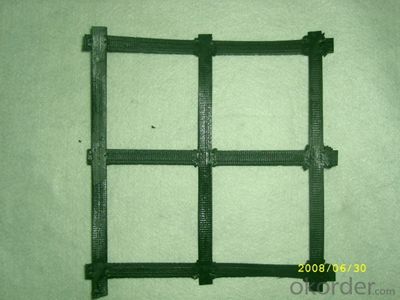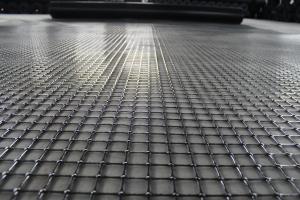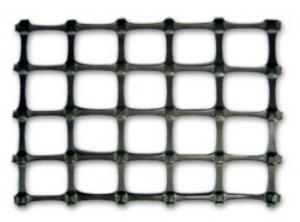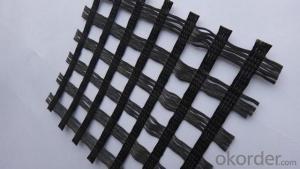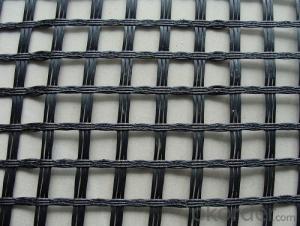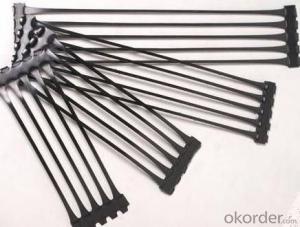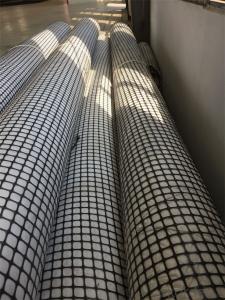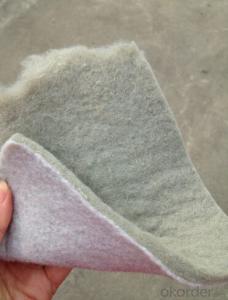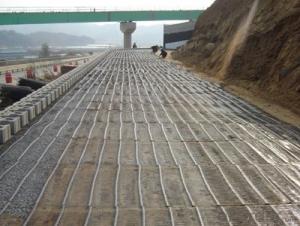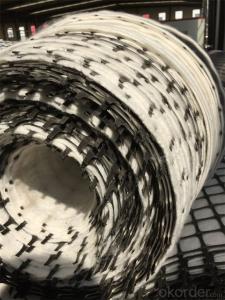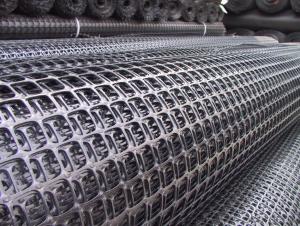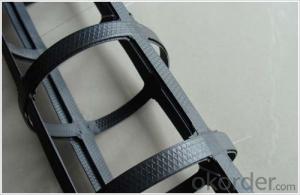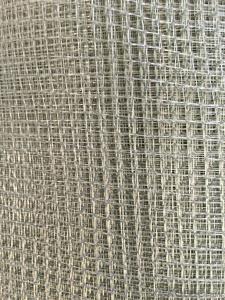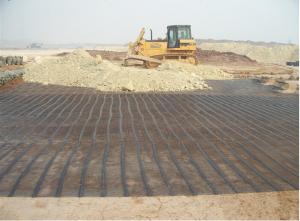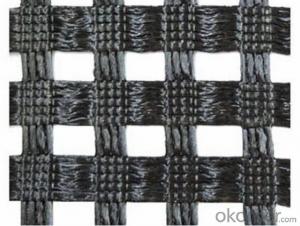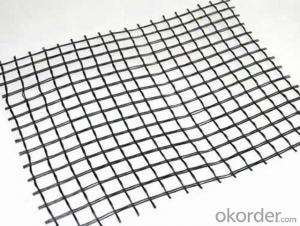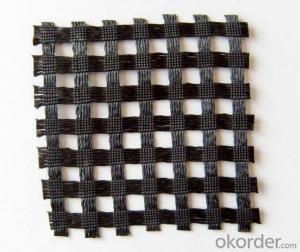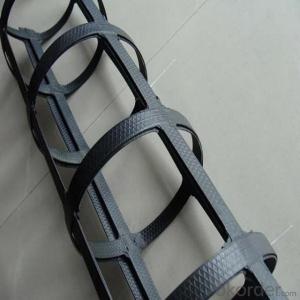Geogrids Fort Mcmurray Steel-Plastic Composite Geogrid for Coal Mine
- Loading Port:
- Tianjin
- Payment Terms:
- TT OR LC
- Min Order Qty:
- 88 m²
- Supply Capability:
- 1800000 m²/month
OKorder Service Pledge
OKorder Financial Service
You Might Also Like
Introduction of CNBM
China National Building Materials (Group) Corporation (CNBM) is a state-owned enterprise in charge of administrative affairs in China building materials industry. Established in 1984, CNBM is a large group corporation of building materials with total assets of RMB 25 billion and a total staff of 30,000. Now CNBM owns more than 200 subsidiaries in and abroad the country, including wholly-owned corporations and joint ventures.
FAQ of geosynthetics :
What is geosynthetics ?
Geosynthetics form a perfect erosion control fabric used extremely widely in civil engineering to stabilize and reinforce slopes and soil under or next to roads, railways, dams, water reservoirs etc.. They can be easily applied which minimizes the time of construction, as well as they limit the resources and materials necessary.
What kinds of geosynthetics we have ?
Non-woven geotextile, geogrids, geocells, GCL, Geomembranes, Geonets, Geocomposites etc .
What is the geosynthetics used for ?
Hydraulic
Lagooning and Water Treatment, Ornamental Ponds, Golf Courses
Aquaculture and Desalination,Water Lagoons,Tanks, Reservoirs, Liquid Waste,Floating Cover Solutions, Drainage and Filtration
Environment
Tailing ponds, Leach mining,Landfills,Landfill Capping,Protection against corrosion,Vertical Barriers
Civil Works
Erosion Control,Secondary Containment,Tunnels,Linear and Surface Works,Consolidation of Margins,Soil Reinforcement,Soil Separation.
Building - Parkings,Roofing,Soundproofing
Structure of Steel-Plastic composite Geogrid for coal mine description :
Made of polypropylene and steel wire by extension technology after inflaming retarding and anti static treatment , it can bear high tensile strength .This material has considerable tensile strength in longitudinal and lateral directions. This chain structure can effectively bear and diffuse forces on soil and is applicable to large area permanent load bearing foundation as a reinforce.
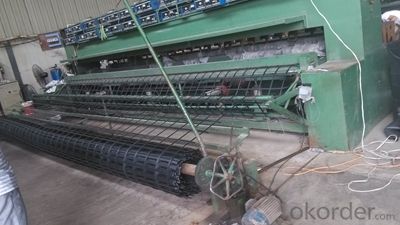
Features of Steel-Plastic composite Geogrid for coal mine:
Homogenous structure, low creepage ,anti-aging and resisting acid and alkaline.
Inflaming retarding , anti static ,long lifetime,high safety factor ,high bearing capacity
Application of of Steel-Plastic composite Geogrid for coal mine :
Make reinforce treatment for various of soft soil foundation to evenly distribute load stress and reduce unevensettlement , it is easy to wash coal . used in highway ,railway,port,airport, municipacl and projects of supporting in the recovery working face of coal mined and ladeway in the coal mine .
Specification of Steel-Plastic composite Geogrid for coal mine
Single mesh belt pulling strength not less than 4000N
Width : 1M,2M,3M,4M.
Length: 50m,100,
Color: black
Packaging & Delivery of Steel-Plastic composite Geogrid for coal mine Each roll is wrapped in a woven bag then into container Or Packed as customers' requests.
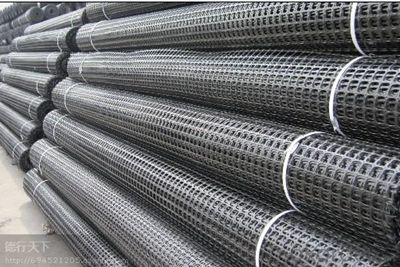
Production periods of Steel-Plastic composite Geogrid for coal mine : within 10 days after receiving the deposit
- Q: Can geogrids be used in landfill applications?
- Yes, geogrids can be used in landfill applications. They are commonly used to reinforce and stabilize the soil in landfills, preventing erosion and providing structural support. Geogrids can help improve the overall performance and lifespan of the landfill by enhancing stability and reducing settlement.
- Q: Can geogrids be used in slope stabilization?
- Yes, geogrids can be used in slope stabilization. Geogrids are commonly used in slope stabilization projects as they provide reinforcement and enhance the stability of soil and slopes. They help distribute loads, increase soil shear strength, and prevent soil erosion. Geogrids are effective in stabilizing slopes and preventing landslides, making them a suitable solution for slope stabilization.
- Q: What are the design considerations for geogrid-reinforced pavements?
- Some of the key design considerations for geogrid-reinforced pavements include selecting the appropriate geogrid material and properties based on the project requirements, determining the optimal placement and orientation of the geogrid within the pavement structure, considering the compatibility between the geogrid and other pavement materials, evaluating the long-term performance and durability of the geogrid, and ensuring proper construction techniques and quality control during installation. Additionally, factors such as traffic loading, subgrade conditions, climate, and drainage need to be taken into account for a successful design of geogrid-reinforced pavements.
- Q: Can geogrids be used in ground improvement projects?
- Yes, geogrids can be used in ground improvement projects. Geogrids are commonly used to reinforce and stabilize weak soil, enhance load-bearing capacity, and prevent soil erosion. They are effective in retaining walls, embankments, road construction, and other ground improvement applications.
- Q: How are geogrids installed in the field?
- Geogrids are typically installed in the field by first preparing the soil surface and removing any debris or vegetation. The geogrid is then rolled out and placed on top of the prepared soil. It is important to ensure that the geogrid is properly aligned and overlapping if multiple rolls are being used. The edges of the geogrid are then securely anchored using stakes or pins to prevent movement during installation. Finally, the soil is backfilled and compacted over the geogrid to provide additional support and load distribution.
- Q: What is the single geogrid 60kN/m
- 60kN/m refers to the direction of force.
- Q: Water conservancy projects, the construction of the geogrid used in the quota which is not, how should the set of fixed price calculation of geogrid?
- The measurement of municipal geogrid shall not be included in the overlap area
- Q: Can geogrids be used in reinforcement of soil-nailing systems?
- Yes, geogrids can be used in reinforcement of soil-nailing systems. Geogrids are commonly used in soil reinforcement applications, including soil-nailing systems, to provide additional stability and strength to the soil. They are typically installed behind the soil nails to distribute the loads and prevent soil movement, enhancing the overall performance of the system.
- Q: How do geogrids improve the performance of mechanically stabilized slopes during seismic events?
- Geogrids improve the performance of mechanically stabilized slopes during seismic events by providing reinforcement and enhancing the stability of the slope. They act as a tension element within the soil, redistributing and controlling the forces generated by seismic shaking. This helps to reduce the potential for slope failure, soil displacement, and excessive deformation, ultimately improving the overall resilience and safety of the slope during seismic events.
- Q: What is the difference between geocell and geogrid
- Geocell:Product Description: geocell is made of high strength HDPE broadband, through a strong welding and the formation of a network of grid room structure. The utility model has the advantages of flexible expansion, and can be folded when being transported, and when the utility model is used, the utility model can be filled with earth and stone or concrete materials, and the structure of the utility model has the advantages of strong lateral confinement and large steel. The utility model can be used as a cushion to deal with the bearing capacity of the foundation with the soft foundation, and can also be arranged on the slope to form a slope protection structure, and can also be used for constructing the retaining structure, etc..
Send your message to us
Geogrids Fort Mcmurray Steel-Plastic Composite Geogrid for Coal Mine
- Loading Port:
- Tianjin
- Payment Terms:
- TT OR LC
- Min Order Qty:
- 88 m²
- Supply Capability:
- 1800000 m²/month
OKorder Service Pledge
OKorder Financial Service
Similar products
Hot products
Hot Searches
Related keywords
